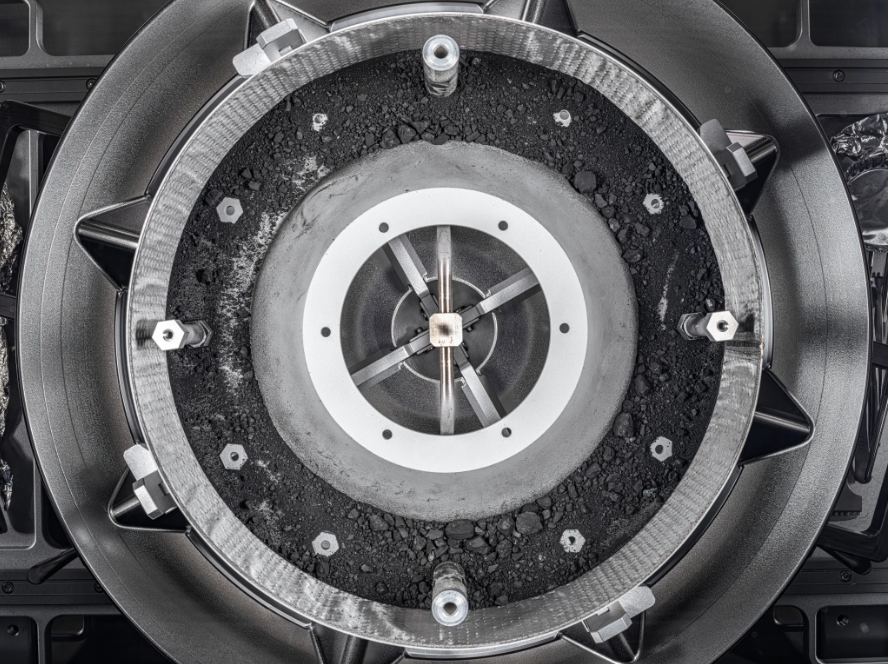NASA’s OSIRIS-REx delivered its precious cargo to Earth on September 24th, 2023. The sample from asteroid Bennu is contained inside the spacecraft’s sampling head, and it’s in safe hands at NASA’s Johnson Space Center in Houston. Two stubborn fasteners delayed the opening of the sampling head, but they’ve been removed, and now we can see inside.
What looks like unremarkable dirt is primordial asteroidal material that’s billions of years old, a natural treasure trove that eager scientists can’t wait to begin studying.
The head and its sample are in the hands of the astromaterials curation team at Johnson Space Center. On January 10th, they opened the Touch-and-Go-Sample-Acquisition-Mechanism (TAGSAM.) The leading image shows what greeted them.

The next step is to remove the round metal collar and place the sample into trays. Each tray will be photographed, weighed, packaged, and stored. The final mass will be determined in the weeks ahead, including the 70.3 grams (2.48 oz) removed previously. That material was on the sampling machinery but outside of the capsule. OSIRIS-REx’s goal was to return 60 grams of material, so it’s already exceeded that amount.
The curation team will catalogue all of the samples later this year. After that, scientists from around the world can request access.

Bennu is a carbonaceous asteroid, a primitive chunk of rock that forms a link to the past when the rocky planets were forming. Scientists have already found carbon and water in the previously removed material. In fact, according to initial analysis, its carbon concentration is close to 5%. That’s among the highest non-terrestrial carbon percentages ever measured. “The OSIRIS-REx sample is the biggest carbon-rich asteroid sample ever delivered to Earth and will help scientists investigate the origins of life on our own planet for generations to come,” said NASA Administrator Bill Nelson at the time.
Once scientists get their hands on more of the material, they’ll doubtlessly find other interesting components. Maybe even some of life’s building blocks, like amino acids. Bennu’s water and carbon content could indicate that life’s building blocks originated in asteroids like Bennu.
The sample also gives researchers an opportunity to test their findings against previous observations of Bennu. Astronomers studied the asteroid’s composition with OSIRIS-REx’s instruments as it approached Bennu, and the samples will tell them how accurate their efforts were. It’s an opportunity to verify and improve spacecraft instruments and remote sensing methods.

Scientists suspect that Bennu could actually be older than our Solar System. If that’s true, then it’s a window into the distant past when only the solar nebula and the proto-Sun existed. It may contain insights into how everything formed, including the Sun.
Bennu may also be one of the remaining pieces of a much larger body. Scientists think that the parent body broke apart between 700 million and two billion years ago. Scientists hope to learn more from the Bennu sample about its parent body and how Bennu migrated to the inner Solar System.
In a notable act of foresight, 75% of the sample will be stored for the future. Instruments and analysis techniques will only improve over time, and these pristine samples will be available when they do. NASA has done the same with other materials like lunar samples, and it’s paid off.
The Bennu samples can only enhance our understanding of our Solar System and how everything came to be. From its ancient early beginnings in the solar nebula to its present-day location in the inner Solar System, Bennu is a well-travelled message-bearer. Now that we have some of that message in our labs, scientists can reveal what Bennu has to say.

